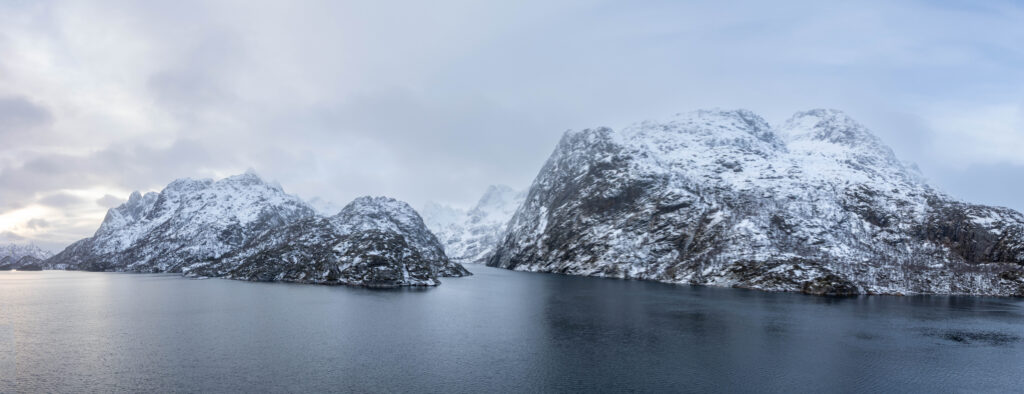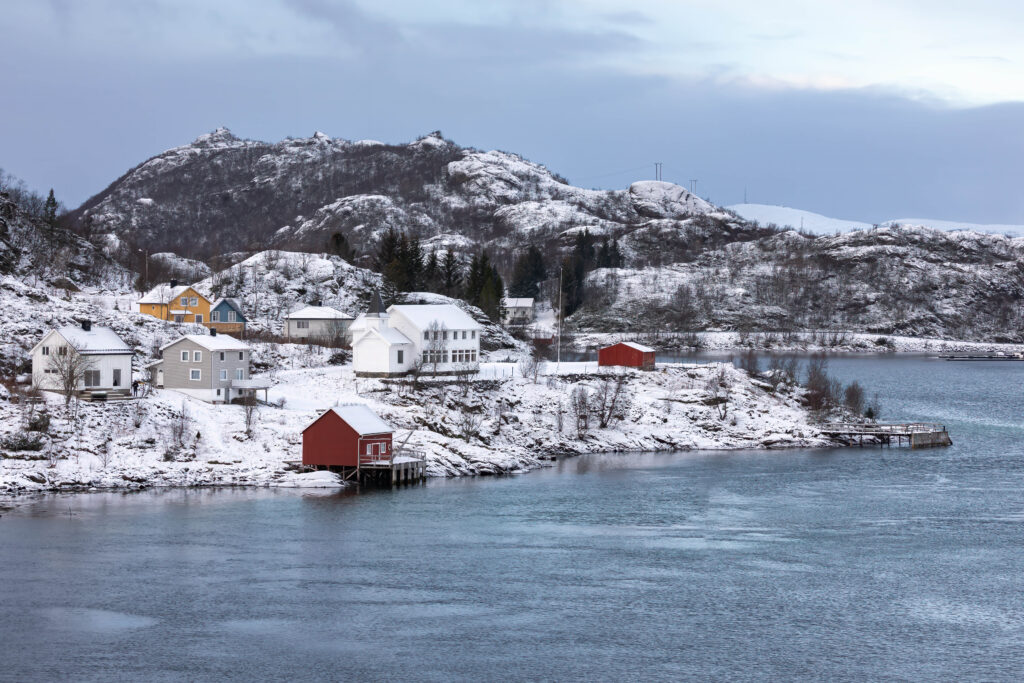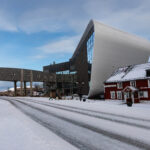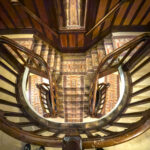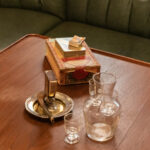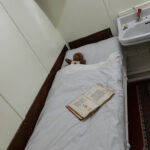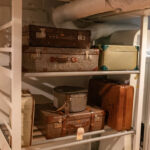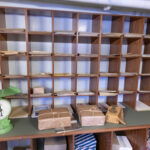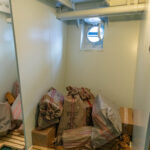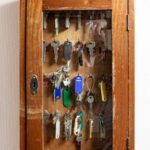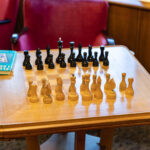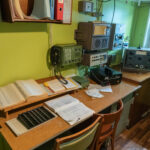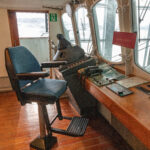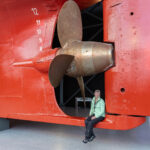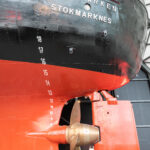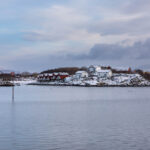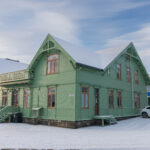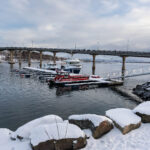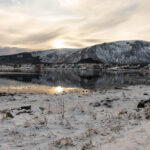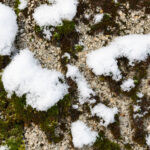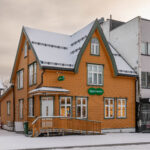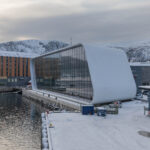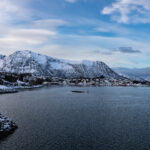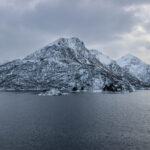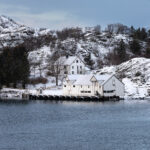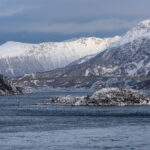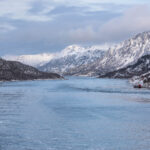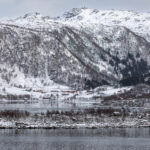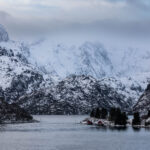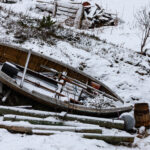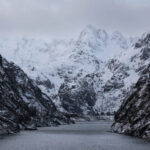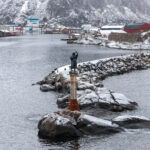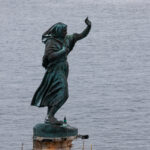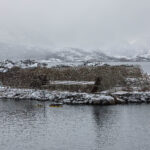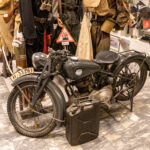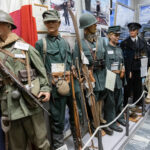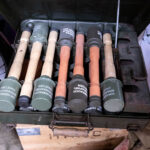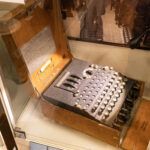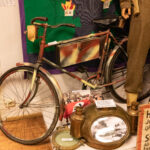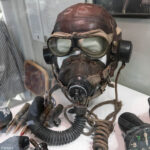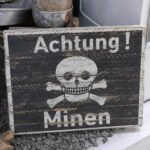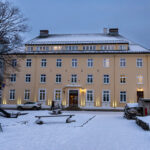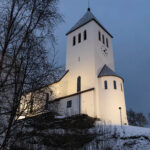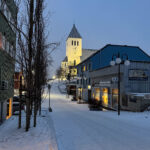Saturday, 15 February 2025
On Day 8 of our journey we had two towns listed on our itinerary. At 9.00am we arrived at our first port of call, Stokmarknes. Stokmarknes is the birthplace of the Hurtigruten Norwegian Coastal Express and home of the Hurtigrutemuseet. We had booked a guided tour of the museum so met one of the ship’s guides at the bottom of the gangplank who walked us around to the Hurtigrutemuseet.
At the museum we were met by our guide, Ann-Katrin. The museum is home to retired Hurtigruten ship, the MS Finnmarken, which commenced service in 1956. The museum also houses the the entire first class section of the MS Finnmarken that was in service in 1912. Ann-Katrin guided us around both of the old ships while telling us how important the Hurtigruten has been for the people living on the Norwegian coast for more than 130 years.
It was fascinating to see the evolution of the service from the early years of the 20th century, when First Class featured a parlour for the ladies and a smoking room for the men, through mid-century to today where the service is much more egalitarian. Norwegians are very proud of their coastal express and happy to be able to showcase the service in this purpose built museum. Our tour concluded with morning tea … in the First Class lounge no less!
Ann-Katrin related a few interesting stories along the way which brought the spaces to life more than looking around on our own would have. She explained how the mail and passenger services worked and told us that passenger’s cars used to be craned onto the deck rather than driving into the belly of the ship. She also mentioned that she had been told that (at least some) captains didn’t get bored on their journeys up and down the coast because the tour guide’s cabin was next to the captain’s cabin and often … the tour guides were women!!!
Another story that really highlighted how much of a lifeline the service was to the community was about a baby born in far north Norway whose mother died in childbirth. The father was working away and there was no family to care for the baby so it was decided she should be transferred to Bergen. But how to feed a newborn on the journey down the coast? A call was put out on the radio and at every port there would be young mothers willing to donate breast milk. The women who was that baby attended the opening ceremony of the museum in 2021.
When we finished at the museum we took a walk around town before returning to the ship for our noon departure. From Stokmarknes we sailed along the picturesque Tengelfjord. Our captain navigated a narrow passage near the island of Ulvøya so that we could look into the mouth of the ship’s namesake fjord, the Trollfjord. In winter the ship cannot sail into Trollfjord because it is very narrow and the risk of falling ice and snow is too great.
Arriving in Svolvær mid-afternoon we sailed past the Fiskerkona statue representing the many wives who waited for their husbands to return home from fishing on the unforgiving seas. Svolvær is the capital of Lofoten which is where the world’s largest cod catches are made in the fishing grounds between January and April each year. Adjacent to the statue we could see the cod racks where the cod is hung to dry for an average of 16 weeks to turn the cod into Tørrfisk (stock fish) that can be stored for later use.
We visited the Lofoten War Memorial Museum which was established in 1996. It houses an extensive exhibitions of uniforms and other items from WWII. Because Australians fought on the Western Front we are more familiar with the war that was fought in Belgium and France. The museum provides insights into the conflict along the Eastern Front and the occupation of Norway by German forces in their push towards Russia. Because of the German occupation the museum holds many German artifacts.
Before returning to the ship we wandered past the Svolvær Church and through part of the Langåsen Sculpture Park. We only found two sculptures near the church so we’re sure we missed some of them? With the daylight fading we decided not to search out more of the artworks but to walk back to the ship in the falling twilight to be back on board in good time for our 6.15pm departure.
We were underway about 10 minutes early. As we sailed from Svolvær we passed a sister ship heading into the port. As luck would have it the other ship passed to port which is the side that our cabin is on so I could see the other ship out our porthole window. The ships greeted each other with flashing of lights and honking of horns.
And then it was time to venture down to the dining room for another three course meal. We were sailing back across the Vestfjorden during dinner so I think we were all happy that it was not as rough as when we sailed from Rørvik to Lødingen on Monday night! The prevailing weather conditions were more conducive to a smooth crossing.
Steps: 12,299 (8.09km)

